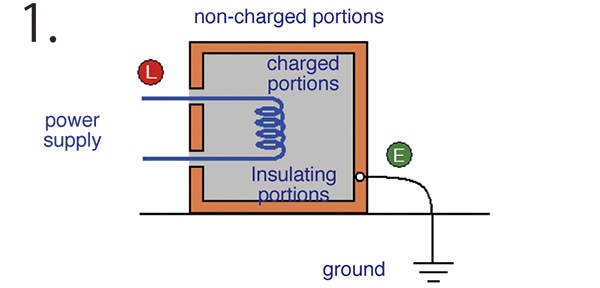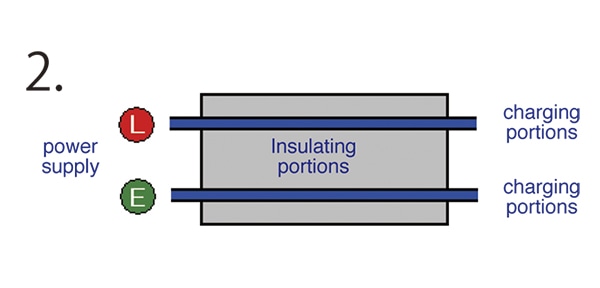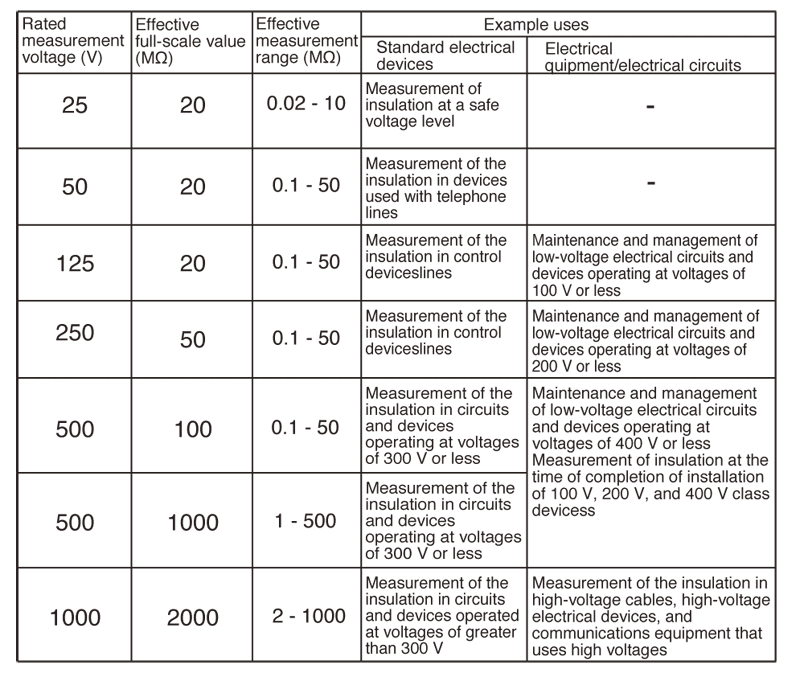What is insulation resistance testing?
Purpose of insulation resistance testing
Portable insulation resistance testers and megohmmeters are designed to help prevent hazards such as electric shock and short-circuits caused when the insulation in electrical devices, parts, and equipment used in industrial plants, buildings, and other settings degrades over long periods of use.
Degradation of the insulation between charged and non-charged portions of electrical devices and equipment utilizing the type of structure illustrated in Figure1 poses the risk of a ground fault or electric shock. Degradation of the insulation between two or more charged potions as shown in Figure 2 poses the risk of a short-circuit.
Higher insulation resistance values indicate more effective insulation.
Insulation testers: Rated standard measurement voltage and example uses
When using an insulation resistance tester to measure insulation resistance, Japanese standards* require certain voltage values to be applied by the instrument for certain measurement targets, as shown in the table.
It is necessary to select from the multiple application voltage values (rated measurement voltages) that are provided by the insulation resistance meter based on the target:
Single-range insulation testers: Insulation resistance meters that can only generate one rated measurement voltage
Multi-range insulation testers: Insulation resistance meters that can generate two or more rated measurement voltages
Since different insulation testers provide different combinations of rated measurement voltages, it is necessary to choose an instrument that provides the combination of values that is best suited to the application at hand.
*The table lists values from Japanese standards.
Please note that these values vary by country.
Criteria for measured insulation resistance values
In Japan, Article 58 of the Technical Standards of Electric Installation sets forth the following insulation resistance values for a variety of circuit operating voltage categories:
Conductor-to-ground voltages that are less than 150 V: 0.1 MΩ
Conductor-to-ground voltages that are greater than 150 V and less than or equal to 300 V: 0.2 MΩ
Conductor-to-ground voltages that are greater than 300 V: 0.4 MΩ
However, it is desirable that newly installed equipment yield a measured insulation resistance value of at least 1 MΩ.



